Movie 03: “The Last Wizard Of The Century”
Original Japanese Premiere Date: April 17, 1999
Original American Release Date: December 29, 2009
Original Version Written By: Kazunari Kochi
Original Version Directed By: Kenji Kodama
American Version Written By: Christopher Bevins
American Version Directed By: Christopher Bevins
Movie Thoughts
It’s very easy to criticize films. Taking a movie, pointing out its flaws, and suggesting how something could have been improved is surprisingly simple to do. A far greater difficulty, I think, is to take something and give it true praise. How does one find the words to do justice to something so delightful while at the same time trying to sound new and original in doing so?
This is the challenge I face in critiquing “The Last Wizard of the Century,” for it is one of the few films in my lifetime that I have seen in which I cannot find a single flaw. The third movie in the series’ history is so brilliant that I would argue the franchise has yet to produce a film to outdo it in the time since it originally graced Japanese theaters in 1999. It transcends the restraints normally associated with movies based on television shows and becomes so much more than just an extended episode of the series.
All of the elements that make a great mystery/adventure film come together so perfectly in “Century.” It presents an extremely well-crafted mystery, thought-provoking puzzles, a group of interesting suspects who all contribute to the story, and wraps them all into an exciting thrill-ride with grand-enough scale to make the movie truly exhilarating without betraying the rules of the universe the series is set in. Perhaps the film’s greatest strength is how it effortlessly juggles no less than four overarching plotlines without flirting with convolution, all leading up to a breathtaking climax which contains what is easily one of my top-five favorite hero/villain confrontations in all of cinema. I simply haven’t seen a production before or since that combines everything that makes this series so magnificent into such a thrilling, whimsical experience.
FUNimation must have noticed how special this movie is because its dub certainly seems determined to do this stellar production justice. This movie receives one of FUNi’s tightest dub scripts in the series’ existence, I think (at the very least, it surpasses the rest of their Conan films in accuracy). There are almost no dialogue changes to record. Most of the characters and locations even keep their original names, resulting in the least Americanized dub of the series since episode 003 of the show. Every voice is perfectly cast for every character; the FUNi cast and crew really put their hearts into this movie.
Despite all of the praise awarded above, this movie unfortunately comes with one major negative change. It appears that FUNimation will sadly no longer be dubbing the series’ vocal songs into English. They use the Japanese version of “One,” the film’s ending song, and also avoid dubbing the movie’s two insert songs (covered below).
Name Conversion Guide
Main Characters
Ai Haibara = Vi Graythorn
Minor Characters
Ginzo Nakamori = Mace Fuller
Shiro Suzuki = Samuel Sebastian
Makoto Nishino = Maxwell Nishino
Shoichi Inui = Giordano Infantino
Ryu Sagawa = Ray Segue
Natsumi Kosaka = Natasha Kosaka
Kuranosuke Sawabe = Kuranosuke Sotheby
Locations
Suzuki Zaibatsu = Sebastian Corporation
Suzuki Gallery of Modern Arts = Sebastian Modern Art Gallery
Every other person and place in the entire film gets to keep their Japanese names. Interestingly, when Ray Segue is killed, Meguire confirms during his examination that Ray was born with the name Ryu Sagawa. So why was his name changed in the first place if they’re just going to refer to him by his Japanese name after he dies?
There are a few more brief things to note concerning names. Some characters who previously appeared in the American dub have been renamed, recast, or both. Samuel Sebastian was voiced by Brice Armstrong in the TV series’ dub. In this film, he is now voiced by Cole Brown. Shintaro Chaki was previously called Bernie Biggers and was voiced by Kent Williams. Here, he keeps his Japanese name and is voiced by Bill Jenkins. Lastly, Mace Fuller keeps his dub name, but he is now voiced by Ian Sinclair instead of Jay Jones.
Video Edit
Continuing an unfortunate tradition from the second movie, TMS only gives FUNi the international version of the film, which features numerous edits to the video. In our first alteration, the establishing shot of Teitan Elementary School is translated.
Most of the film’s changes are video edits.
Video Edit
The movie receives a different title card, just like the others.
Video Edits
The biggest edits of the entire film once again take place during the opening credits sequence. Let’s see what was changed this time.
The shot where Kogoro falls into the chair and Conan walks onscreen to talk to the audience is zoomed in to cut out the Japanese credits. The shot remains zoomed in when Conan holds up his Stun-Gun Wrist-Watch and Voice-Changing Bow-Tie for the audience to see.
Professor Agasa mixes some chemicals in the next shot, but because it’s zoomed in to such an extreme degree, we can’t see the blue substance inside his beaker.
The shots of Conan riding his Solar-Powered Skateboard and using his Criminal Location Glasses are also zoomed in.
The shot of Conan with Shinichi behind him is freeze-framed. Originally, we see Conan turn around to face the camera while the image of Shinichi pans across the screen.
The final shot of the opening, in which the camera rotates around Conan as he does his trademark “there is always only one truth” speech, is zoomed in. Did you know that Conan was originally standing on a cliff? You can’t tell in the international version!
Video Edits
The information about the Metropolitan Police Department is translated.
So is the information about the Kaito Kid committee room.
Shintaro Chaki’s information is gray-boxed next…
… followed by Detective Nakamori’s information.
As Detective Nakamori explains Kaito Kid’s letter, the information behind him is translated.
Of course, this is probably the sloppiest edit of the entire film because in the very next shot, the text is in Japanese again.
Nice job, TMS…
The edits continue as another part of Nakamori’s deduction is translated.
Video Edit
Makoto Nishino’s information is gray-boxed.
Also, I’d like to point out that unlike with movie two, FUNi thankfully went in and put the dub names into the gray boxes. While the original Japanese video would have been ideal, at least this time it’s not causing confusion by showing the Japanese names in the gray boxes while the characters say the dub names aloud.
Video Edit
The information about Professor Agasa’s house is translated.
But honestly, at this point in the series, who even needs a gray information box to identify that man’s home?
Dialogue Edit
Agasa Quiz time! The film’s obligatory riddle is very Japanese and hard to adapt for an English script, so the joke is altered for the dub. Here’s the original Japanese riddle: “I (“washi”) have many grandkids (“ooku no mago”). How old am I?”
The answer to this riddle is “zero.” The word “washi” is also the word for “eagle” in Japanese. The Japanese characters for “ooku no mago” can be altered to form “tamago,” which means “egg.” The riddle is basically a play on words asking how old the egg is, and of course, if you’re still in an egg, you’re zero years old.
Here’s the replacement riddle for the dub: “A pearl-white chest without key or lid, inside of which golden treasure is hid. What am I?” The answer to this one is “an egg.” As Vi explains, the pearl-white chest is the shell, while the golden treasure inside is the yolk. While it’s certainly not an adaption, at least it keeps with the theme of eggs, so props to FUNi for thinking of a fitting replacement.
Video Edits
Osaka P.D. HQ gets gray-boxed.
Seconds later, the name of the Suzuki Gallery of Modern Arts is translated/adapted to match Serena Sebastian’s family name.
Once we’re inside the gallery, a gray box lets us know we’re in the chairman’s room.
Shiro’s information is translated, but FUNi forgets to replace “Sonoko” with “Serena,” “Shiro” with “Samuel,” or “Suzuki” with “Sebastian.” Oops!
Next, our suspects are revealed. First up is Sergei Ovchinnikov.
Shoichi Inui appears next. His dub name is actually “Giordano,” which the gray box manages to misspell.
Seiran Hoshi is gray-boxed next.
Finally, Ryu Sagawa is profiled.
Money Edit
Shoichi’s offer to pay 800 million yen for the Imperial Easter Egg is changed to $8 million in the American version. Later, Ryu states that he could probably only come up with 200 million yen for the eggs. This is changed to $2 million for the dub.
Video Edit
The Namba Hotel Shrine’s information is translated next.
Video Edits
The restaurant that Kogoro and Shiro eat at is gray-boxed.
Seconds later, the Dotonbori is labeled, too.
Next, we have the substation.
Honestly, did the names of any of these places really need to be specified? They appear once in the entire movie for a few seconds each.
Video Edits
Another gray box appears to let us know what day it is.
Natsumi Kosaka is next in our gallery of gray boxes.
Her butler, Kuranosuke, is covered next.
Money Edit
Shoichi suspects that the second Imperial Easter Egg would be worth over 1.5 billion yen. This is changed to $10.5 million in the American version.
Side Note
One of Rachel’s lines during the scene with the girls on the ship is slightly confusing if you don’t have the proper background information.
Rachel: “Wow, that’s neat! The kanji for “Seiran” is written as “blue orchid,” right? The origin of my name is “orchid,” too!”
This isn’t a dialogue edit or anything. In fact, this is pretty much word-for-word what Ran says in the Japanese version. Ironically, that’s the problem. The character’s original name, “Ran,” really does mean “orchid,” but this isn’t true for the name “Rachel.” The dub chooses to adapt the original dialogue without taking the character’s name change into account, so we unfortunately have a bit of an error.
The error continues as the girls discuss how their names would be pronounced in Chinese. “Maori Ran” isn’t really how you would say “Rachel Moore” in Chinese, nor is “Lingmu Yuanzi” the way to pronounce “Serena Sebastian” in Chinese, but the dub states this anyway because there’s really no way to get around this with the American name changes.
I’d certainly prefer these errors over a full rewrite of the conversation, so I think Mr. Bevins made the right choice by keeping the original dialogue, even if neither outcome is ideal.
Video Edits
Speaking of pronunciations, those pesky gray boxes appear to help us out with “Pusu Chinran.”
Next, the boxes help Ran figure out what day comes in-between May 3rd and May 5th.
Okay, I know the animators want the audience to understand every little thing, but I seriously think they’re overdoing it here. Or maybe I’m just bitter because I have to take screencaps of all these…
Video Edit
Next, we have a gray box introducing Officer Shiratori.
You know, in case you haven’t already learned who he is from the previous two films.
Video Edit
Another day, another gray box.
Video Edit
We receive another gray box once we arrive in Yokosuka.
Video Edits
Once inside the castle, the Room of Knights is identified.
The Noble Women’s Room is next.
Then the gang takes a trip to the Emperor’s Room.
Video Edits
Some gray boxes pop up to help us with the Russian text.
It’s worth noting that on the initial Japanese home video releases of this film, “wizard” was spelled as “wisard” in that last shot, though it has since been corrected in subsequent releases. Also, I notice that somehow, the Japanese text in the last shot has been erased without utilizing any pointless gray boxes. I’m not sure if this was TMS’ or FUNi’s doing, though I’m tempted to say it was the latter since it actually looks good. I mean, see how wonderful this one looks when compared to the others? No gray boxes, no oddities in the animation, background, or anything?
If this was FUNimation, then they prove here that their paint editors are incredibly capable of making little alterations like this (even more so than the company that made this movie, whose employees don’t seem to mind compromising their own animation by cropping, zooming, and slapping ugly gray boxes everywhere). I can only imagine how good the film would have looked if FUNi had been able to work with the unedited video…
Video Edits
Our final gray text boxes show up during the film’s climax.
I think it’s absolutely hilarious that despite retaining heavy amounts of foreign text in this film (Chinese, Russian, English), TMS is still so damn determined to ensure that all this tiny, inoffensive Japanese writing is covered up.
Music Edit
During the film’s climax, “Kimi ga Ireba” (“If You’re Here,” in English) starts playing the moment Scorpion’s bullet bounces off Conan’s glasses and continues until Shiratori and Conan are consumed by the flames inside the castle. Normally, insert songs like these are dubbed into English by FUNimation. This time, though, the song isn’t dubbed. In fact, they don’t even leave the Japanese version of the song in the film. Only the vocal-less karaoke version plays in the American version.
The climax loses a lot of its “oomph” without the vocals, so this is a real shame. It’s especially baffling because FUNi’s dubbed an English version of “Kimi ga Ireba” more than once in the past. Why not put the song in if it’s already dubbed and ready to go?
Music Edit
The film’s final vocal song, “Ai wa Itsumo” (“Love Is Eternal,” in English), starts playing when “Shinichi” shows up in front of Ran and Conan at the Detective Agency. Just like with the previous song, it’s replaced with a karaoke version.
I don’t know if the series is doing so badly for FUNi that they can’t even afford to dub the songs anymore or what. It’s very odd.
Video Edit
The English ending credits are placed over the film’s final shot, which is to be expected from the American versions of the movies by now.
The original Japanese credits feature live-action footage of buildings and cities (probably in Osaka, since that’s where a good portion of the film takes place). In this movie, however, the credits sequence switches back and forth between the live shots and clips from the film (as opposed to every other Conan movie, in which the film clips pop up in little boxes over the real footage).
Final Thoughts
Phenomenal. Simply outstanding. I don’t think there’s a single dubbed episode or movie in Case Closed with better writing or acting. The only alterations I take issue with are the missing insert songs, but aside from those, there isn’t a single way the American version of this movie could have been improved. I can only hope that one day FUNimation will be able to release an unaltered version of the film without TMS’ pointless tampering so that the movie can be truly flawless.
In the meantime, though, FUNi has put together a fantastic dub for what I wouldn’t hesitate to call Conan’s finest film. The American staff’s sudden dedication to produce scripts with zero changes may have come far too late in the series’ run, but as they always say, better late than never. See you next time!
_____________________________________________________________________________________



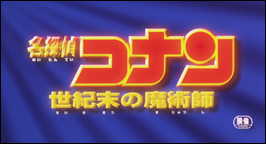






























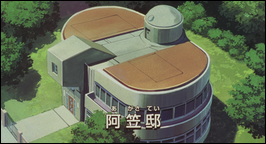
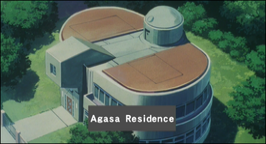








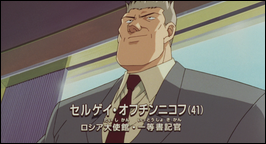






































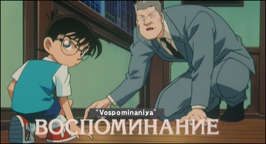









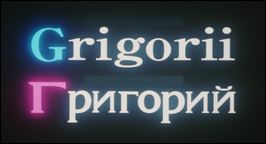


#1 by Sushiconan on October 28, 2011 - 9:46 PM
Is it me, or is the English version a tad bit darker?
#2 by MagicBox on October 29, 2011 - 12:58 PM
Script-wise or picture-quality-wise? There weren’t any significant script changes other than the ones I mentioned above, and I certainly didn’t notice any added dialogue meant to make the movie any darker. If you’re talking about picture quality, though, then I trust the colors I took from FUNi’s DVD.
The screencaps from the Japanese versions of movies 02 and 03 were taken from a blurry, horribly over-saturated source, and they look terrible. Unfortunately, it was all I had access to at the time. I’m currently re-capping the same shots from the Blu-Ray release (for both this film and movie 02), so I suspect the colors on the new images will more closely match FUNi’s DVD.
#3 by Sushiconan on October 29, 2011 - 8:06 PM
I meant the picture quality, FUNi’s looks darker.
#4 by MagicBox on October 29, 2011 - 11:25 PM
In certain shots, I guess. But I really don’t think that’s the right word. The Japanese version caps are just really over-saturated. I mean, just take a look at the shots of the Noble Women’s Room and Ryu Sagawa. It’s almost enough to make your eyes bleed. The reason why I say “darker” isn’t the right word is because of the above shot of the substation. You can hardly see anything in the Japanese version cap, but everything’s perfectly clear in FUNi’s. And that’s the darkest shot of the movie. So FUNi’s isn’t really darker, just less saturated. The colors on FUNi’s DVD are more or less spot-on.
But again, that’s because I had crappy source video for the Japanese version. Once I upload the caps from the Blu-ray, both versions will be closer. I actually just went through and replaced every single screencap in Movie 02′s comparison with the Blu-Ray versions a few hours ago, so this movie is next. :)
#5 by MagicBox on November 6, 2011 - 12:03 AM
The old, crappy Japanese version caps have been replaced with the exact same frames from the Japanese Blu-Ray release. I cannot tell you guys how much better it makes me feel to now have accurate screencaps for every film. Now that a proper comparison can be made, I will agree that the English version is slightly darker than the Japanese version, but it’s not due to brightness. You’ll notice that there seems to be a blue tint over FUNi’s version, altering the colors and the brightness. The whole “blue tint” thing is pretty common in home video releases (most recently in the Blu-Ray release of “Star Wars: Episode II – Attack Of The Clones”), but I have no way of determining if this was FUNi’s doing or TMS’.
Thank goodness that side project is done. Now to get back to the comparisons…
#6 by Sushiconan on November 28, 2011 - 5:03 PM
Thank you!
#7 by Sushiconan on November 28, 2011 - 5:14 PM
Strange, the one gray box says “The committee of Thief kids investigation”. They should have put it as “Phantom Thief Kid’s investigation”. Weird.
#8 by MagicBox on November 28, 2011 - 6:45 PM
Yeah, it’s really Engrish-y. I really cannot stand the structure of these gray boxes and their text. There’s no apostrophe in “kids” and the inconsistency in capitalization drives me crazy.
#9 by Jack Reaper on March 25, 2012 - 12:50 PM
Christopher Bevins should directed and write every case closed movie and episode? anyone else agree :D